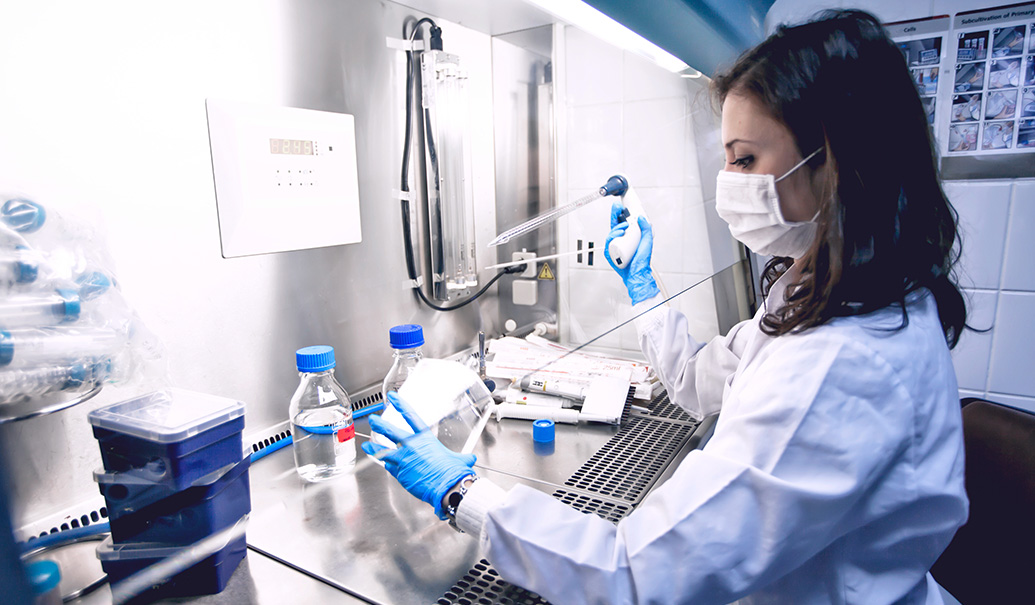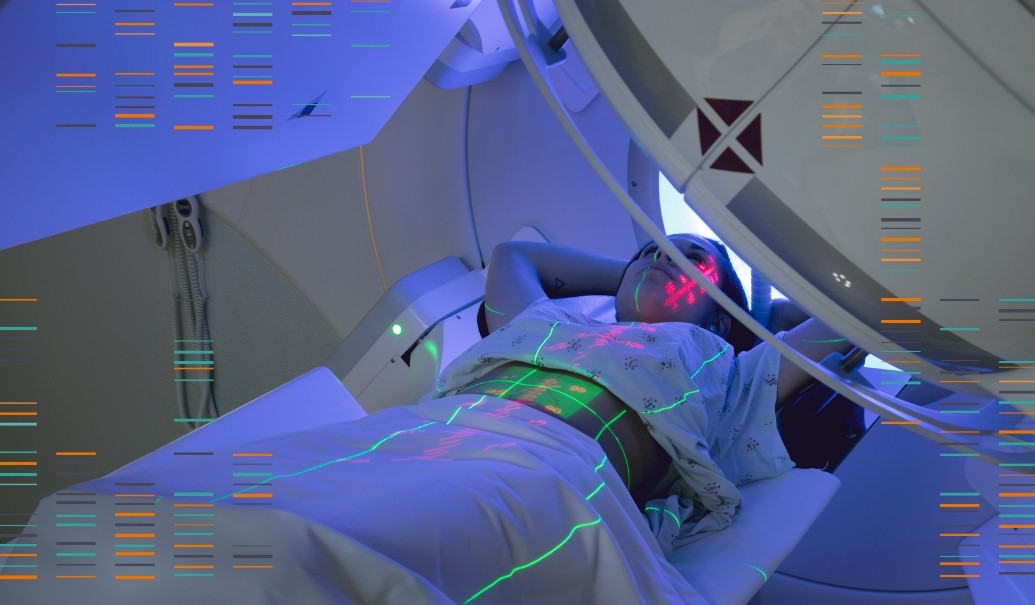The field of cell and gene therapy (C>s) has seen a renaissance. Understanding what the major market trends are, how the therapy types are distributed across the clinical landscape and the scientific rationale for preferring one C> over another is critical to building successful C> development and commercialization strategies. This article is a summary from our e-book, “Assessment and Predictions of the Cell & Gene Therapy Pipeline,” which is a landscape analysis of the industry with a future lens through which we highlight three key insights for C>. You can request a copy of the full e-book at the end of this article.
Allogeneic NKs could displace current cell therapies in oncology
What’s the potential? Although earlier in development, allogeneic natural killers (NKs) have response rates that appear comparable with cell therapies but have the added benefit of reduced toxicity (download PDF to see figure 1). Due to functioning through major histocompatibility complex (MHC) independent mechanisms and their limited lifespan in circulation relative to T-cells, NKs do not have a risk of causing graft versus host disease (GvHD) during allogeneic administration. Additionally, NKs release secreted cytokines distinct from the set induced by CAR-T cells that are highly associated with cytokine release syndrome (CRS) and neurotoxicity (NT). For example, NKs do not generally excrete IL-6 as one of their primary cytokines, once activated. Given that the drug Actemra used to combat CRS in CAR-T patients is an IL-6 blocker, it stands to reason the lack of IL-6 excretion from NK cells may contribute to the extremely few, or in some cases absent, CRS and NT events seen to date.
Allogeneic NKs are being developed for many of the same indications where we see autologous and allogeneic CAR-Ts being developed, such as diffuse large B-cell lymphoma (DLBCL), chronic lymphocytic leukemia (CLL) and multiple myeloma (MM). With the benefit of reduced logistics, improved turnaround time and the reduction or even absence of major adverse events (AEs), allogeneic NKs hold great potential as a preferred cell therapy in the future oncology C> market.
What’s the challenge? As with other allogeneic therapies, the question of durability remains unanswered. While response rates of allogeneic NKs have been comparable to autologous and allogeneic Ts in some diseases, the ability of allogeneic cells to expand, proliferate and survive long term is still unclear. Theoretically, allogeneics could result in shorter durations of response. In some cases, persistence of infused NK cells may be markedly shorter than that of CD19-directed CAR-Ts and BCMA-directed CAR-Ts, such as Bristol Myers Squibb’s Abecma, which can be as long as several years.
In fact, Phase 1 data for Fate Therapeutics’ allogeneic NK FT516 may signal concerns about durability. Two complete responders (CRs) experienced disease progression at 4.2 and 5.1 months and one partial responder was treated with additional anticancer therapy. It should be noted, though, that the study consisted of a small n-size and a highly refractory patient population. Manufacturers are exploring approaches to improving allogeneic duration of response including human leukocyte antigens (HLA)-matching, novel lymphodepletion regimens, HLA class I and II deletion and use of immunomodulatory factors. For example, for their allogeneic CAR-T therapy ALLO501A, Allogene is leveraging a lymphodepletion regimen with a proprietary anti-CD52 antibody that selectively depletes host T-cells to reduce risk of immune rejection and improve cell persistence. However, this same therapy recently made headlines not for durability, but for safety concerns surrounding unintentional genetic alterations in the cells. It has not yet been determined if the genetic alteration is a result of the therapy.
Some cancers may also not respond as well to NK cells as they do T-cells. One example may be MM, where NK cells in development have a more modest response rate compared to Abecma and Janssen’s Carvykti.
In vivo gene therapies could outshine cell and gene technology in solid cancers
What’s the potential? Of all the solid cancer indications being investigated with C>s, in vivo gene products have the most in the pipeline, with 37 unique assets targeting 86 indications (download PDF to see figure 2). Historically, CAR-T products have faced efficacy struggles in solid cancers due to the immunosuppressive tumor micro-environment (TME). TCR therapies that can target intracellular targets are typically limited to niche patient populations due to required HLA and target expression. Next-generation CAR therapies such as “armored” CARs designed to overcome the immunosuppressive TME are still early in development and require cell therapy manufacturing complexities.
In vivo gene therapies offer the potential to reduce the complicated logistics and long turnaround time (TAT) associated with TCR and CAR therapies. In addition, they may serve as an off-the-shelf option, which theoretically should be less impacted by the TME. In vivo gene therapies provide a wide range of possibilities by which they can target cancer, ranging from expressing genes that reveal the cancer to the immune system, directly killing the cancer cells by inducing apoptosis or introducing an enzyme to convert pro-drugs to their active form. Some viral vectors delivering gene therapies may even be further primed to establish an infection specifically in cancer cells due to the highly proliferative nature of the cells. While cell-based therapies have been the focus of the solid tumor landscape in the past, gene therapies are poised to make a large splash in the solid tumor market alongside cell-based therapies.
What’s the challenge? Cancer is not typically caused by a single gene, so the restoration of any one gene, or the introduction of a single gene, may not be enough to overcome cancer cell defenses. Efficacy of in vivo gene therapies alone may not be comparable to other C>s at this time. In breast cancer, the overall response rate (ORR) was 28%; for melanoma the durable response rate (DRR) was 16.3 and the median overall survival was 22.9. For ovarian cancer, the progression-free survival observed was 33%. However, a combination approach for in vivo gene therapies may be possible as vector design improves and increases the amount of genetic material a gene therapy can deliver. CRISPR vector designs that can have multiple cellular targets or guides will likely move from pre-clinical models into trials, enhancing the ability of a single gene therapy vector to target multiple variables.
While the first wave of C>s are single agents, the future may be combinations
What’s the potential? There are nearly 350 C> combination trials in progress, including combinations of cell with gene therapies, cell therapies with each other, in vivo gene with each other and cell and gene with checkpoint inhibitors (download PDF to see figure 3).
While Kymriah is highly effective for acute lymphocytic leukemia (ALL) and DLBCL patients, 30% to 60% still relapse with some evidence suggesting that they relapsed post-CAR as CD19-negative, CD20-positive. A combination of CD19 and CD20 CARs—or a single CAR able to target both—could lead to additive benefits that overcome observed relapses. There is a trial exploring CD19 and CD20 CAR-T combinations and five trials exploring CD19 and CD22 CAR-T combinations. As new cell and in vivo gene therapies are developed, the potential to use multiple C>s together for a more powerful therapeutic effect could exist. For example, CAR macrophages target and kill cancer cells in a completely different way than CAR-Ts. These two cell modalities in vivo could theoretically work synergistically with each other for an even greater activation of the immune system. In theory, in vivo gene therapies could also be used to lower defenses put up by the TME in solid cancers to enhance CAR therapy effectiveness or even turn cold tumors into hot through activation of the immunosuppressive tumor environment.
Increased activation of CAR-T cells and increased recognition of solid cancers can theoretically be achieved through combinations with checkpoint inhibitors such as CTLA4 and PD-1s. Eleven ongoing clinical trials are examining the use of CARs in combination with checkpoint inhibitors—10 with CAR-T and one with Iovance’s CAR-NK. Of these, eight are being studied in hematologic indications, including non-Hodgkin’s lymphoma (NHL), CLL, ALL, MM, and three in solid indications, including glioblastoma (GBM), colorectal cancer and non-small cell lung cancer (NSCLC).
Data is still nascent, though hematologic trials thus far have indicated positive outcomes. For instance, the ALEXANDER trial tests AUTO-3 in combination with Keytruda, showing durable complete remission and complete response (CR) without severe CRS or NT. Tolerable safety profiles have been demonstrated for Yescarta with Tecentriq (ZUMA-6), Kymriah with Keytruda (PORTIA) and Breyanzi with Imfinzi (PLATFORM). These combinations are also being studied with other T-cell technologies. Lifileucel, Iovance’s autologous tumor infiltrating lymphocyte (TIL), in combination with Keytruda, a checkpoint inhibitor, for advanced melanoma patients demonstrated an 85% ORR, and CR of 43%, suggesting a powerful additive effect that confirms feasibility to combine technologies. Checkpoint inhibitors may have the potential to significantly enhance the antitumor activity of T-cells, including T-cell recognition of malignant cells to facilitate eradication and reduction of T-cell exhaustion to achieve persistence. It is likely that the future is not in mono C>s but in combination.
What’s the challenge? Adverse events seen with C>s today can be fatal in rare cases. Combining C>s or other therapies designed to activate the immune system could make AE management more challenging. Separately, C>s have proven to be some of the highest-priced therapies on the market, an area of contention even today, four years after the launch of the first marketed CAR-T. Combining multiple high-priced drugs would continue to put a severe strain on patients, providers and the healthcare system as a whole. C> combinations are more likely to be a reality assuming reimbursement hurdles can be addressed within the constraints of what is required from a patient safety aspect.
Add insights to your inbox
We’ll send you content you’ll want to read – and put to use.
















